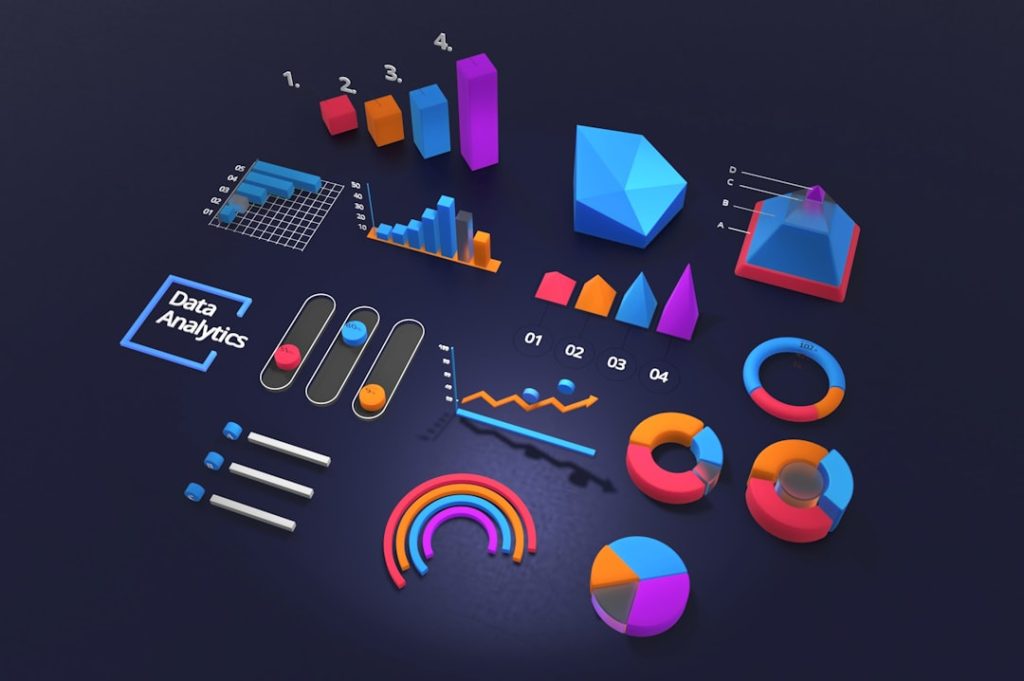NVivo is a powerful qualitative data analysis software that has become an essential tool for researchers, academics, and professionals across various fields. Designed to facilitate the organization, analysis, and visualization of unstructured data, NVivo allows users to delve deep into qualitative information, such as interviews, focus groups, surveys, and social media content. The software supports a range of data types, including text, audio, video, and images, making it versatile for different research methodologies.
As the demand for qualitative research grows in an increasingly data-driven world, NVivo stands out as a robust solution that enhances the rigor and depth of qualitative analysis. The software’s user-friendly interface and comprehensive features enable researchers to manage their data efficiently. With NVivo, users can import data from various sources, organize it systematically, and apply coding techniques to identify patterns and themes.
This process not only streamlines the analysis but also fosters a deeper understanding of the data. Furthermore, NVivo’s capabilities extend beyond mere data management; it also offers tools for visualizing findings and generating reports. As qualitative research continues to evolve, NVivo remains at the forefront, providing researchers with the tools they need to extract meaningful insights from complex datasets.
Key Takeaways
- NVivo is a powerful qualitative data analysis software that helps researchers organize, analyze, and gain insights from their data.
- Importing and organizing data in NVivo involves bringing in various types of data such as documents, audio, video, and images, and organizing them into a manageable structure.
- Coding and categorizing data in NVivo allows researchers to systematically analyze and interpret their data by identifying themes, patterns, and relationships.
- Creating and managing queries in NVivo enables researchers to ask specific questions of their data and retrieve relevant information to support their analysis.
- Visualizing and exploring data in NVivo provides researchers with tools to visually represent their data and gain a deeper understanding of their findings.
Importing and organizing data in NVivo
One of the first steps in utilizing NVivo effectively is importing and organizing data. The software supports a wide array of file formats, allowing users to bring in documents from word processors, spreadsheets, and even multimedia files. This flexibility is crucial for researchers who often gather data from diverse sources.
Once the data is imported, NVivo provides a structured environment where users can categorize their information into folders and subfolders. This hierarchical organization not only aids in maintaining clarity but also enhances accessibility when navigating through large datasets. Moreover, NVivo allows for the creation of classifications and attributes that can be applied to different data sources.
For instance, researchers can assign demographic information or contextual details to interview transcripts or survey responses. This feature is particularly beneficial for comparative analysis, as it enables users to filter and sort data based on specific criteria. By establishing a well-organized framework from the outset, researchers can save time during the analysis phase and ensure that their findings are grounded in a comprehensive understanding of the data landscape.
Coding and categorizing data in NVivo

Coding is a fundamental aspect of qualitative data analysis, and NVivo offers a robust set of tools to facilitate this process. Users can create codes—often referred to as nodes—that represent themes or concepts emerging from the data. This coding process allows researchers to segment their data into manageable pieces, making it easier to identify patterns and relationships.
NVivo’s drag-and-drop functionality simplifies the coding process, enabling users to quickly assign codes to relevant sections of text or multimedia files. Additionally, researchers can create hierarchical nodes to represent sub-themes or categories within broader themes, providing a nuanced understanding of the data. The ability to categorize data effectively is crucial for drawing meaningful conclusions from qualitative research.
NVivo supports this by allowing users to visualize their coding structure through various tools such as code hierarchies and coding stripes. These visual aids help researchers see how different codes relate to one another and how frequently they appear across the dataset. Furthermore, NVivo’s query functions enable users to explore coded data in depth, facilitating a more thorough analysis.
By employing these coding and categorization techniques, researchers can uncover insights that might otherwise remain hidden in unstructured data.
Creating and managing queries in NVivo
| Query Type | Definition | Example |
|---|---|---|
| Text Search Query | Finds all instances of a specific word or phrase in the project | Searching for the word “leadership” in all project sources |
| Coding Query | Retrieves all coded segments that meet specific criteria | Finding all coded segments related to “customer satisfaction” in a specific source |
| Matrix Coding Query | Compares coding patterns across different attributes | Comparing coding patterns for “gender” and “age” in relation to “job satisfaction” |
Queries are an essential feature of NVivo that empower researchers to explore their data in sophisticated ways. The software offers several types of queries, including text search queries, coding queries, and matrix coding queries. Text search queries allow users to find specific words or phrases within their dataset, which can be particularly useful for identifying recurring themes or concepts.
Coding queries enable researchers to examine how different codes interact with one another, providing insights into relationships between themes. Matrix coding queries take this a step further by allowing users to cross-tabulate different variables or attributes against coded data, facilitating comparative analysis. Managing queries effectively is vital for maximizing the analytical potential of NVivo.
Researchers can save their queries for future reference or modify them as new questions arise during the analysis process. The results of these queries can be exported into reports or visualizations, making it easier to communicate findings to stakeholders or collaborators. Additionally, NVivo’s query functions are designed to be intuitive, allowing users with varying levels of technical expertise to harness their power.
By leveraging these querying capabilities, researchers can conduct thorough investigations into their qualitative data and derive insights that inform their research objectives.
Visualizing and exploring data in NVivo
Visualization is a key component of qualitative data analysis that enhances understanding and communication of findings. NVivo provides a range of visualization tools that allow researchers to present their data in compelling ways. For instance, users can create word clouds that highlight frequently used terms within their dataset or generate charts that illustrate the distribution of codes across different themes.
These visual representations not only make complex information more digestible but also help identify trends and patterns that may not be immediately apparent through text alone. In addition to static visualizations, NVivo also supports dynamic exploration of data through its interactive features. Researchers can use models and diagrams to map out relationships between different themes or concepts visually.
This capability is particularly useful for developing theoretical frameworks or conceptual models based on qualitative findings. Furthermore, NVivo allows users to export visualizations for inclusion in presentations or reports, ensuring that insights are communicated effectively to diverse audiences. By integrating visualization into the analysis process, researchers can enhance their understanding of qualitative data while also improving the clarity of their findings.
Collaborating and sharing data in NVivo

Collaboration is increasingly important in research environments where interdisciplinary teams work together on complex projects. NVivo recognizes this need by offering features that facilitate collaboration among multiple users. Researchers can share projects with colleagues or team members, allowing them to contribute to the analysis process seamlessly.
This collaborative approach not only enhances the richness of the analysis but also fosters diverse perspectives that can lead to more robust findings. Moreover, NVivo provides options for managing user permissions and tracking changes made by collaborators. This ensures that all contributions are documented and that the integrity of the project is maintained throughout the research process.
Additionally, users can export their findings into various formats for sharing with stakeholders outside the project team. Whether through reports, presentations, or visualizations, NVivo makes it easy for researchers to communicate their insights effectively while maintaining transparency in their collaborative efforts.
Best practices for using NVivo for qualitative data analysis
To maximize the effectiveness of NVivo in qualitative data analysis, researchers should adhere to several best practices. First and foremost, it is essential to establish a clear coding framework before diving into the analysis process. This framework should outline key themes and sub-themes relevant to the research questions at hand.
By having a structured approach from the beginning, researchers can ensure consistency in coding and minimize ambiguity during analysis. Another best practice involves regularly reviewing and refining codes as new insights emerge during the analysis process. Qualitative research is inherently iterative; therefore, being open to revising codes based on evolving understandings of the data is crucial for capturing its complexity accurately.
Additionally, researchers should take advantage of NVivo’s visualization tools throughout the analysis process rather than just at the end. By continuously engaging with visual representations of their data, researchers can identify trends early on and adjust their analytical strategies accordingly.
Conclusion and future considerations for utilizing NVivo
In conclusion, NVivo serves as an invaluable tool for qualitative data analysis by providing researchers with a comprehensive suite of features designed to enhance organization, coding, querying, visualization, collaboration, and reporting capabilities. As qualitative research continues to gain prominence across various disciplines—from social sciences to market research—NVivo’s role in facilitating rigorous analysis will only become more critical. The software’s adaptability allows it to cater to diverse research needs while maintaining a user-friendly interface that encourages engagement from both novice and experienced researchers alike.
Looking ahead, future considerations for utilizing NVivo may include further integration with emerging technologies such as artificial intelligence and machine learning. These advancements could enhance NVivo’s capabilities by automating certain aspects of coding or providing predictive analytics based on qualitative datasets. Additionally, as remote collaboration becomes increasingly common in research environments, enhancing cloud-based functionalities within NVivo could further streamline teamwork across geographical boundaries.
Ultimately, as researchers continue to navigate complex qualitative landscapes, tools like NVivo will remain essential allies in uncovering meaningful insights from rich datasets.
If you are exploring qualitative data analysis tools like NVivo, you might find it useful to understand the privacy policies of the platforms you are considering. For a detailed look at how user data is managed, you can refer to the privacy policy of Xosap, which might provide insights into data handling practices that could be relevant when choosing a software like NVivo. You can read more about their policies by visiting Xosap’s Privacy Policy. This information can help ensure that your data analysis practices comply with privacy standards.
FAQs
What is NVivo?
NVivo is a software program designed for qualitative and mixed-methods research. It helps researchers organize, analyze, and visualize unstructured data such as interviews, surveys, social media, and web content.
What are the key features of NVivo?
NVivo offers features such as data import from various sources, coding and categorizing data, querying and visualizing data, and collaboration tools for team-based research projects.
Who uses NVivo?
NVivo is used by researchers, academics, students, and professionals in fields such as social sciences, psychology, education, business, and healthcare for conducting qualitative data analysis.
What are the benefits of using NVivo?
Using NVivo can help researchers to efficiently manage and analyze large volumes of qualitative data, identify patterns and trends, and generate insights to support evidence-based decision making.
Is NVivo available for both Windows and Mac?
Yes, NVivo is available for both Windows and Mac operating systems, with similar features and functionality across both platforms.
Can NVivo handle different types of data formats?
Yes, NVivo can handle a wide range of data formats including text, audio, video, images, and social media data, making it a versatile tool for qualitative data analysis.
